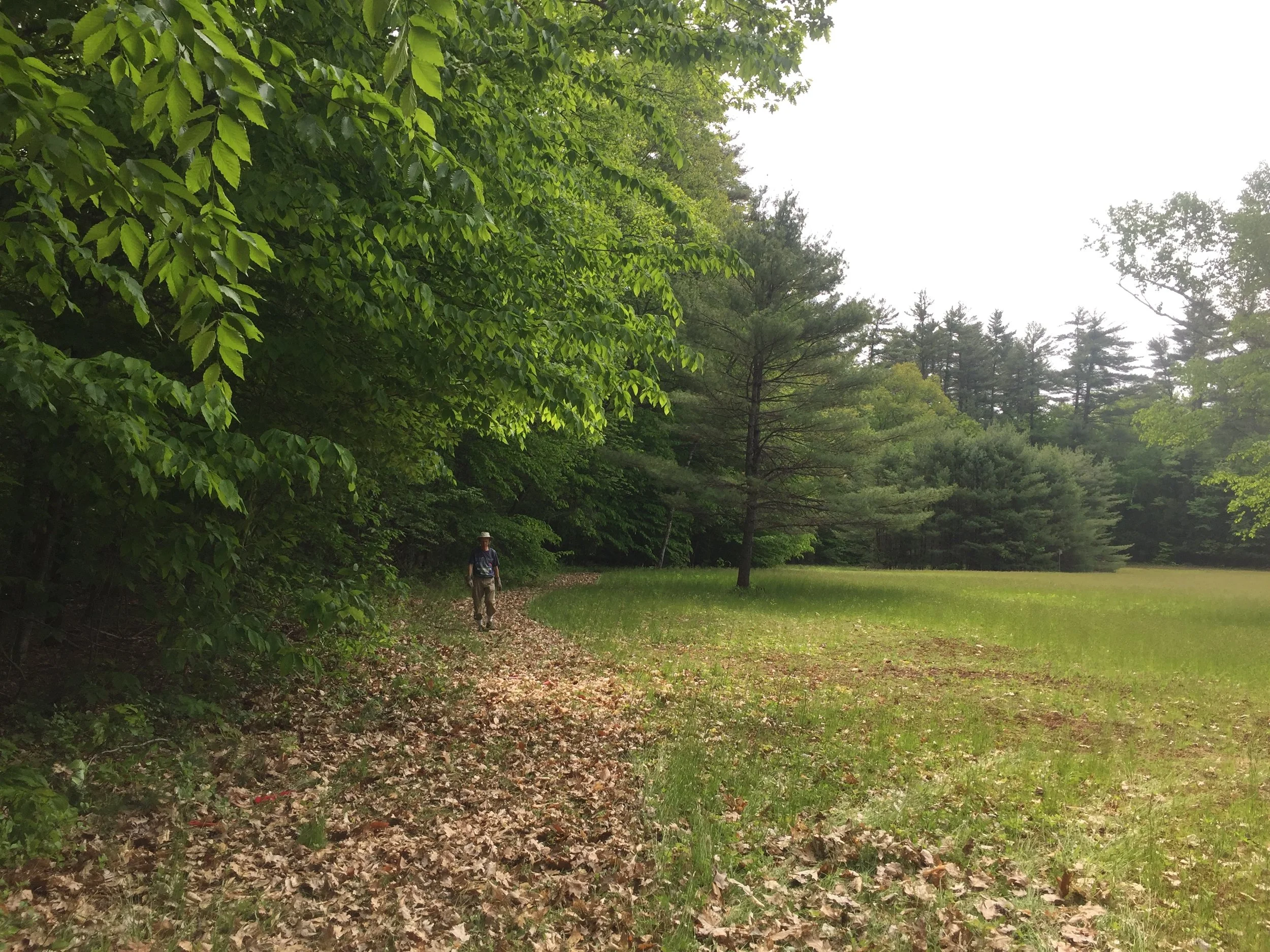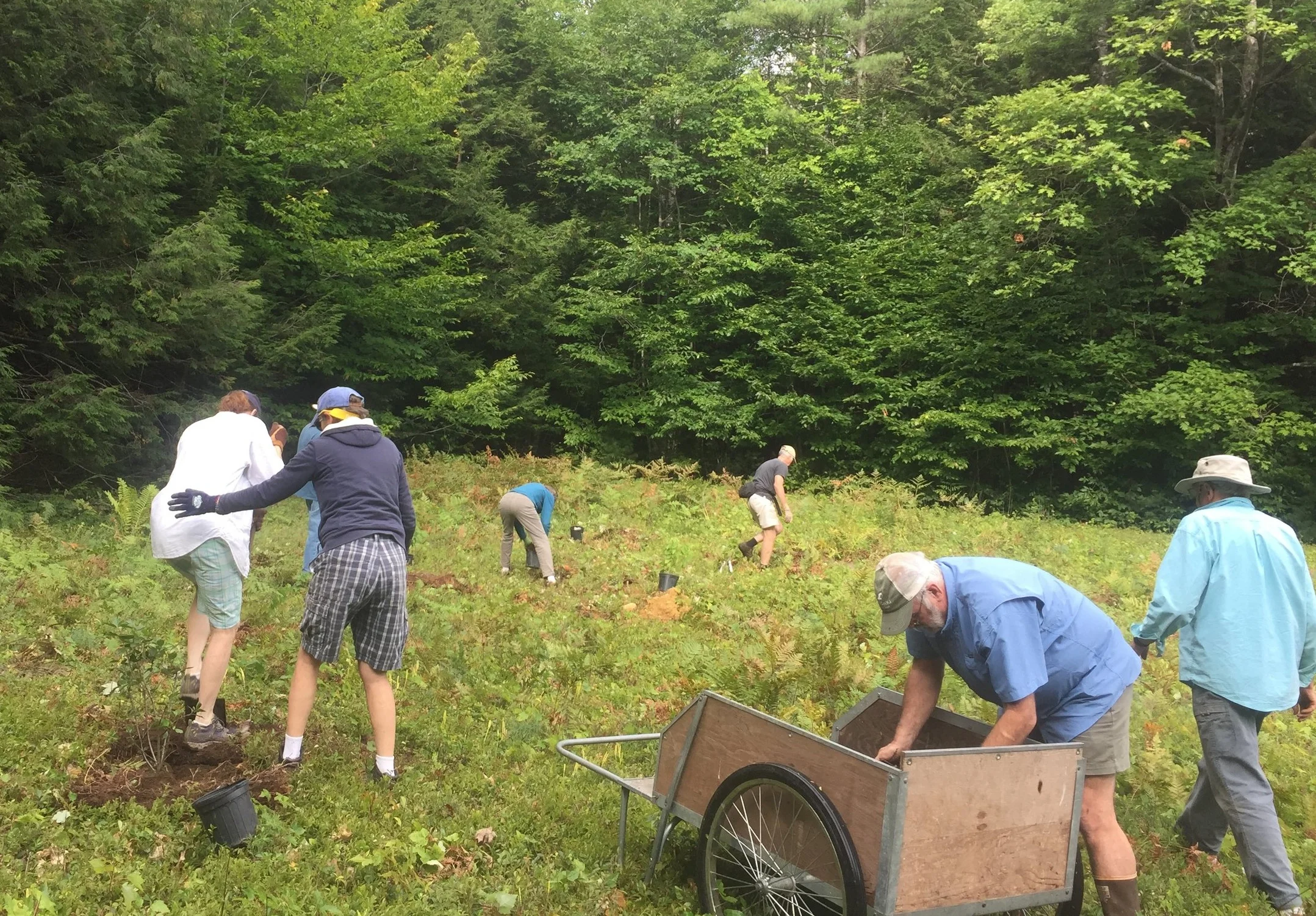Whether you own 10 acres or 200 acres, or even a lot in town, you have opportunities to steward your land.
CLC is grateful for the many resources available to us as we work toward being stewards of the public lands we hold. These resources are not just for land trusts, but are available to private landowners as well, and are a wonderful place to search for information—from forestry and wildlife habitat to invasive plants and farming.
Mulching shrubs planted thanks to an NRCS grant. Photo: Lynne Flaccus
Looking for a forest management plan but aren’t sure where to start or if it’s worth the effort? Would you rather manage your land or gardens specifically for birds or pollinators? Clearing fields, timber stand improvement, creating wildlife openings in the forest, improving trout habitat, and plantings for wildlife, are just a few examples of stewardship projects that a landowner might get help with. In some cases grants are available to offset costs associated with implementing some of the practices for growing trees or growing wildlife! With the help of the Natural Resources Conservation Service (NRCS) and their amazing staff, landowners can get help with planning and sometimes funding; the reward is connecting to your land in a way that can benefit you and the larger community.
Stocking trout at Chocorua Lake.
NH Fish and Game’s Small Grants Program provides funding for similar projects. They also provide funding for a management plan, geared more towards wildlife habitat management. Field clearing, mowing, forest openings for wildlife, “release” of fruiting shrubs and old apple trees are just a few examples of practices they support. The application process is fairly simple and funding can be as much as $10,000 over 10 years. Speaking with one of the regional biologists will help you determine what is right for you and what may be available from these grants.
The UNH Cooperative Extension offers a huge amount of information on natural resources and tips for landowners, in addition to farming and canning! Have some old apple trees to prune for wildlife or want to get more apples for your sauces and jellies? UNHCE has workshops and fact sheets to help you out. Would you like your gardens to provide more food for pollinating insects? Invasive barberry shrubs growing in your field and you don’t know how to get rid of it? You’ll find all kinds of valuable information and will also find links to other organizations with even more answers.
Installing bird boxes.
For those who own shorefront property, the NH Department of Environmental Services (DES) is the go-to place to learn about ways to protect your shoreline buffer and water quality. Landowners can also find the current DES rules and regulations related to permissible activities within the waterfront buffer. The vegetated buffer is critical to preventing erosion, maintaining water quality, and providing a wildlife corridor among other functions. We all know water flows downhill: someone else is always downstream or down lake from you!
This is just a short list of resources for landowners, and each has links to others. If you’re not sure what, if any, active stewardship or management might work on your land, start with this list and you may find practices and funding that connect you to your land in new and exciting ways. Forests, streams, lakes and wildlife don’t stop at boundaries, and we all play a role in stewardship, whatever happens on our own land.
You’re welcome to join CLC on some of our stewardship days to see how we have been using some of these great resources!
Carroll Soil and Water Conservation District
USDA Natural Resource Conservation Service, local office in Conway
NH Department of Environmental Services, for conservation grand funding resources
NH Fish and Game’s Small Grants Program
NH Fish and Game’s landowner resources
USDA Natural Resource Conservation Service, local office in Conway
Banner: Kristina Folcik




